Five Hundred Children Celebrates World Meteorological Day
With World Meteorological Day just three days away, the National Met Service has already begun to celebrate. Today, hundreds of children from primary schools across the country visited their compound in Ladyville to take part in the various presentations held at the World Meteorological Day Fair. This year, Belize celebrates under the theme, “At the Frontline of Climate Action”. We stopped by to learn more about the event and its activities. Here’s News Five’s Britney Gordon with that story.
Britney Gordon, Reporting
Every year, on March twenty-third, countries around the world join in the observation of World Meteorological Day. It is meant to commemorate the establishment of the World Meteorological Organization in 1950. This year’s theme highlights the very important role that weather and climate information play in advancing sustainable development goals and reducing the impacts of extreme weather and climate-related events on societies across the globe. Michael Holtz, a weather observer at the National Meteorological Service, gave us some information about the importance of the event.

Michael Holtz
Michael Holtz, Weather Observer, NMSB
“World Met Day is on March twenty-third, we’re celebrating a little bit earlier, but it’s about exposing the kids into the weather, how we get information from the weather, how that might be useful to them, and give them a little bit more insight about the rain, the weather, and So for the types of instruments we use and just to have them build up an interest in case they want to come work here work For a mutual job service and so they have a deeper understanding of science and how it works.”
Holtz said that the fair displayed a host of activities and informational booths for the kids to visit where they learned about the MET’s automatic weather stations, radar, and weather balloons. Around five hundred children attended the event, with some hailing from as far as Caye Caulker. Marina Chimilio explained why she thought it was important to make the visit to the fair along with her students.
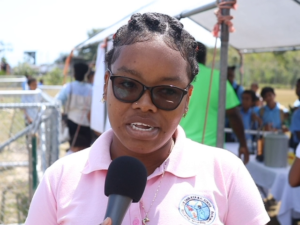
Marina Chimilio
Marina Chimilio, Teacher, Caye Caulker Roman Catholic School
“I believe that it’s important for kids to be a part of these kind of fairs. Because they could use it in their science lesson and get to learn more and put it into practice. I want them to learn more about the satellite. When they came, they asked, Miss, what is that big ball there? And we went and asked a gentleman and he said that after the tour that they will know more about it.”
Britney Gordon
And you’re hoping to implement some of the things that they learn here today into their science lessons?”
Marina Chimilio
“Yes ma’am.”
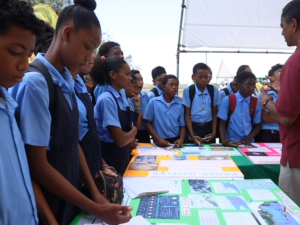 Speaking with a few of Chimilio’s students, we learned what they gleaned from the presentations.
Speaking with a few of Chimilio’s students, we learned what they gleaned from the presentations.
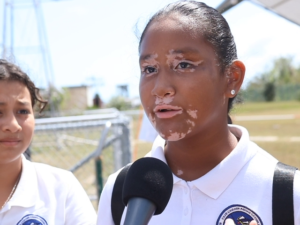
Amaya Tun
Amaya Tun, Student, Caye Caulker Roman Catholic School
“I learned that the sun recorder records how many, I don’t know how to say it, but the heat. It records all the heat that the sun projects.”
Britney Gordon
“So, can you tell me what you learned at today’s event so far?”
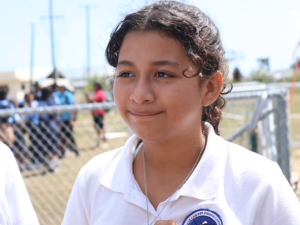
Penny Young
Penny Young, Student, Caye Caulker Roman Catholic School
“Okay, that the thermometers test the temperature of things.”
Britney Gordon
“So are you excited to be participating in today’s event?”
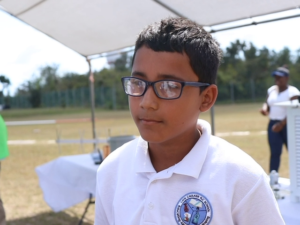
David Maradiaga
David Maradiaga, Student, Caye Caulker Roman Catholic School
“Yes.”
Britney Gordon
“Have you learned anything so far?”
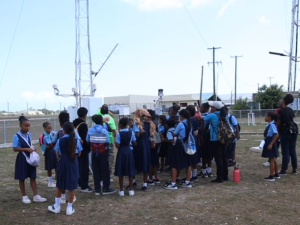 David Maradiaga
David Maradiaga
“That there’s, that there’s four types of thermometers. And that there’s one of the thermometers, the max thermometer, is the closest to be those thermometers that the nurse give you.”
The highlight of the day’s activities was the releasing of a weather balloon used to measure temperature, wind, and pressure as it ascends. Michelle Augustine, Deputy Chief Meteorologist at the National Met Service, said that performing a simulation with the balloon for the children to observe was an important part of today’s event, as the balloon is a vital tool in weather observations.
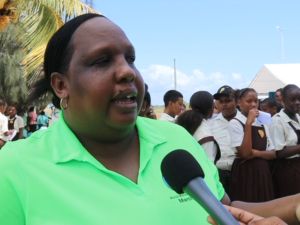
Michelle Augustine
Michelle Augustine, Deputy Chief Meteorologist, NMSB
“This provides meteorologists or forecasters with an idea of what is happening above the surface in terms of these weather parameters. And it helps us to basically better forecast the weather conditions over our area. Additionally, this information is very important from the weather balloon. During hurricane season. Because when we have the approach of a storm, the National Hurricane Center relies on this information from this ray of the sun that is released with the weather balloon to help them to assess or analyze the data over a particular area. So, the weather balloon will provide, for example, if a system is approaching, if the pressure is low, so it helps them to validate where the center of the storm is. Likewise, also the wind conditions. If the weather balloon goes up and measures, instrument, measures that the wind is very strong near our area, then the hurricane forecasters would be better able to pinpoint the location of the system.”
Britney Gordon for News Five.






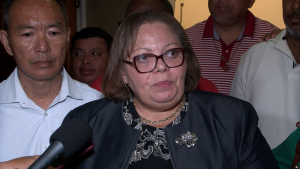
Facebook Comments